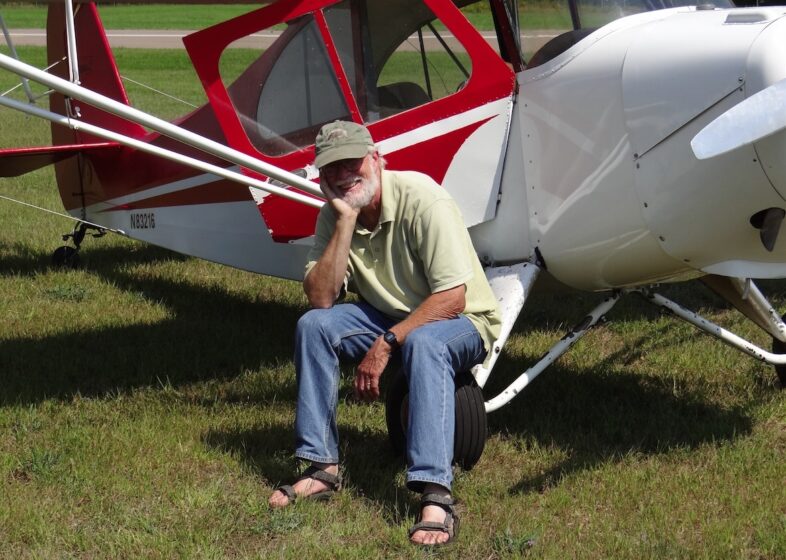
© Kevin Hall
“I was born looking around the world to see what was there.” Ian Worley’s innate curiosity may help explain why he began finding salamanders at age three, building model airplanes at four, and ultimately studying multiple disciplines—math, physics, biology, philosophy, history, literature, and theology.
With his broad interests and independent worldview, it’s no surprise that Ian’s first position after completing his Ph.D. in 1970 was to help create the University of Vermont’s (UVM’s) first interdisciplinary environmental studies program. Since then, his career has exemplified just how interdisciplinary this field can be. As a UVM faculty member, he taught courses in several departments, contributed widely to government agencies and nonprofits, and served on the Vermont Endangered Species Committee. Over the years, Ian regularly incorporated his airplane piloting skills into monitoring projects, conservation planning, decision-making, and community outreach. He has also mentored countless students, many of whom have made meaningful contributions to conservation efforts in Vermont and around the world (including VCE’s own Chris Rimmer in 1976!).
Today, Ian applies his expertise and passion to community science endeavors. He notes, “There are four hallmarks of modern science—repeatable methods, documentation, review, and publication.”In all tasks, he considers how to add rigor to community science projects and thus is drawn to participating in those that have all four hallmarks. Ian’s participation in eBird and VCE community science projects is an endorsement of their robust methodologies.
In 2009, Ian responded to a call for Vermont eBird Volunteer Reviewers from VCE’s Kent McFarland. What started as reviewing checklists in the Champlain Valley for an hour per week steadily grew to over 30 weekly hours validating lists for many locations worldwide, spanning the Arctic and north Atlantic oceans to the Subantarctic Indian Ocean. “I enjoy the global impact one can have as an eBird reviewer,”Ian explains. However, Ian isn’t only an energetic reviewer—he’s also a major eBird contributor himself, having recently submitted his 25,000th checklist.
In addition to his enormous eBird presence, Ian also conducts community science field work to support VCE projects. For example, he has maintained Forest Bird Monitoring Program routes at Bristol Cliffs Wilderness Area and West Rupert for several years and conducted more than a decade of Eastern Whip-poor-will surveys at many locations, including on Snake Mountain, and in Pawlet, Monkton, and Hinesburg.
We at VCE recognize Ian’s contributions to community science and thank him for his outstanding work. As Chris Rimmer points out, he was nominated for this award because “Ian has consistently gone to extraordinary lengths as an eBird reviewer and outreach champion. Not only has he invested innumerable hours reviewing eBird reports from around the state, but he has offered meticulous feedback to those who have submitted exceptional (sometimes questionable) records. Ian has also submitted an extraordinary number of checklists himself. The amplified rigor of Vermont eBird owes much to Ian’s efforts.”Ian continues to be a vocal community science ambassador, encouraging participation in VCE’s ever-expanding long-term monitoring projects.“Keep up the good work, keep the four hallmarks of science in front of you, and remember: monitoring outlasts the monitors.”
___________________________
The Julie Nicholson Community Science Award honors Julie Nicholson’s extraordinary passion and commitment to birds and wildlife conservation through her many years of tireless work as a community scientist. It is presented annually to an individual who exemplifies Julie’s dedication to the cause of community science and conservation.
